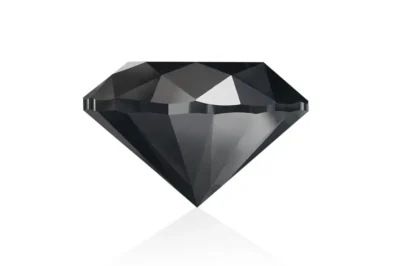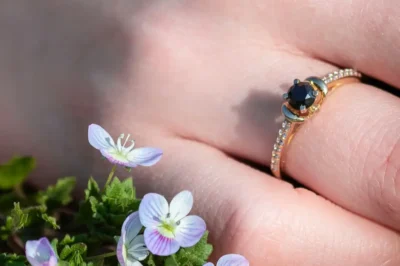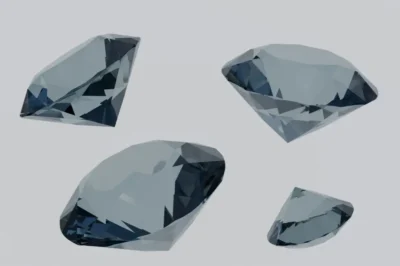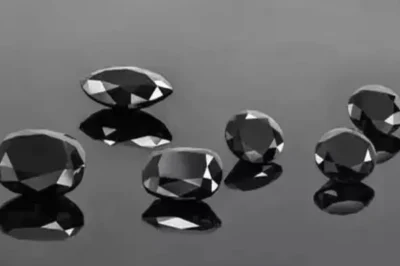If you’ve ever gazed at a glittering jewelry store display or scrolled through high-end online jewelers, chances are a certain mysterious gemstone has caught your eye: the black diamond. Unlike traditional white or colorless diamonds, black diamonds carry an aura of mystique, sophistication, and bold style. Their unique color and rarity have captured the imagination of collectors, engagement ring seekers, and fashion-forward jewelry enthusiasts alike.
Welcome to your ultimate Black Diamond Buying Guide, designed to help you navigate the rare and captivating world of black diamonds. Whether you’re a seasoned collector or a first-time buyer, this guide will walk you through everything from understanding the origins and properties of black diamonds, to evaluating quality, exploring jewelry options, and even investing for the future.
In this guide, we’ll make complex topics simple, sprinkle in a little fun, and give you actionable insights so you can confidently choose your perfect black diamond.
What Makes Black Diamonds Unique?
Origins of Black Diamonds
Black diamonds are not your run-of-the-mill gemstones. Their striking dark appearance sets them apart from the usual transparent or colorless diamonds, and understanding where they come from adds a whole new layer of appreciation.
Natural black diamonds, sometimes called carbonado diamonds, are incredibly rare and form under extreme conditions deep within the Earth. Unlike white diamonds, their color comes from numerous inclusions—tiny minerals and graphite—embedded within the stone during formation. Most of these natural wonders are found in Brazil and the Central African Republic, regions known for producing exceptionally unique gemstones.
On the other hand, many black diamonds on the market today are treated or enhanced. Treatments like irradiation, heat, or coating give otherwise colorless diamonds a rich black hue, making them more widely available and affordable. While not “natural” in the purest sense, treated black diamonds offer the same durability and visual appeal, allowing more buyers to enjoy their striking beauty.
Physical and Optical Properties
Black diamonds boast unique physical characteristics that set them apart. First, their color ranges from deep, opaque black to slightly translucent dark gray, depending on whether they are natural or treated. Unlike white diamonds, black diamonds rarely sparkle in the traditional sense because inclusions scatter light differently. Instead, they offer a subtle, elegant shine that makes them ideal for bold and dramatic jewelry designs.
In terms of hardness, black diamonds are incredibly durable. They score a 10 on the Mohs scale, just like other diamonds, which makes them suitable for everyday wear in rings, bracelets, and necklaces. However, because black diamonds can have more inclusions, they may be prone to minor chipping during intense impacts, so careful handling is advised.
Popularity and Market Demand
Once considered unusual and niche, black diamonds have surged in popularity over the last decade. Celebrities like Jessica Simpson and Rihanna have flaunted black diamond engagement rings, fueling interest among fashion-forward buyers.
Beyond aesthetics, black diamonds are also appealing as an investment. Their rarity—especially natural black diamonds—makes them valuable in a collector’s market. Even treated and lab-grown black diamonds have grown in demand due to their striking, versatile appearance.
Types of Black Diamonds
Natural Black Diamonds
Natural black diamonds are the holy grail for collectors and connoisseurs. Their color is naturally occurring, resulting from high concentrations of graphite or other mineral inclusions. These diamonds are incredibly rare and can command high prices, especially if they are large, well-cut, and have deep, even color.
Identifying a natural black diamond requires careful evaluation and certification from reputable labs, which we’ll cover later in this guide.
Treated or Enhanced Black Diamonds
Treated black diamonds are more accessible and affordable than their natural counterparts. Common treatments include:
- Irradiation: Exposing the diamond to radiation to deepen color.
- High-heat treatment: Altering internal structures to produce a black or dark gray hue.
- Coating: Applying a thin layer of black material to the surface of the diamond.
While these diamonds are not “purely natural,” they still possess all the hardness and durability characteristics of other diamonds. Treated black diamonds are ideal for buyers seeking dramatic black stones without the high price tag of natural black diamonds.
Synthetic Black Diamonds
Lab-grown or synthetic black diamonds are gaining traction as an ethical, eco-friendly alternative. These diamonds are created in controlled environments that replicate the natural diamond-forming process, resulting in stones that are chemically, physically, and optically identical to natural diamonds.
Lab-grown black diamonds offer several benefits:
- Lower cost compared to natural black diamonds
- Reduced environmental impact
- Guaranteed ethical sourcing
For buyers interested in sustainability and affordability, synthetic black diamonds are an excellent option.
Key Factors to Consider When Buying Black Diamonds
The 4Cs for Black Diamonds
Even though black diamonds differ from traditional white diamonds, the 4Cs—Carat, Cut, Clarity, and Color—still play a crucial role in evaluating quality:
- Carat: Size matters, as larger black diamonds are rarer and often more expensive. Consider the setting as well; a larger stone may dominate a ring, while a smaller one can offer subtle elegance.
- Cut: While black diamonds don’t sparkle like white diamonds, the cut still affects their overall appearance and how light interacts with the stone. Popular cuts include round, cushion, and princess.
- Clarity: Inclusions in black diamonds contribute to their color. Slight imperfections are acceptable, but excessive cracks or surface blemishes may reduce durability.
- Color: Look for a deep, consistent black. Gray or uneven patches may indicate lower quality or poor treatment.
Certification and Authenticity
Always demand certification when purchasing a black diamond. Reputable labs such as GIA or IGI provide detailed reports that confirm:
- Natural vs. treated or synthetic origin
- Carat weight
- Cut, clarity, and color grades
Certification not only ensures authenticity but also protects your investment. Avoid diamonds without proper documentation, as these may be treated stones or synthetic without disclosure.
Price Considerations
Pricing a black diamond depends on several factors:
- Origin: Natural black diamonds command higher prices.
- Size: Larger stones are rarer and more expensive.
- Treatment: Treated or lab-grown diamonds are more affordable.
- Market trends: Celebrity endorsements and fashion trends can drive temporary price spikes.
Expect to pay anywhere from a few hundred dollars for small treated stones to tens of thousands for large, natural black diamonds. Always compare prices across certified sellers to ensure you’re getting a fair deal.
Black Diamond Jewelry Options
Engagement Rings
Black diamond engagement rings make a bold, unconventional statement. Popular designs include:
- Solitaire black diamonds: Highlight the stone’s unique color with a minimalistic setting.
- Halo settings: Surround the black diamond with white diamonds for contrast and extra sparkle.
- Two-tone rings: Combine black diamonds with rose gold or platinum for a modern twist.
These rings appeal to couples seeking individuality and elegance, and they are increasingly seen as a stylish alternative to traditional white diamonds.
Earrings, Necklaces, and Bracelets
Beyond rings, black diamonds shine in fashion jewelry. Consider:
- Stud earrings: Simple yet striking, perfect for everyday wear.
- Statement necklaces: Large black diamonds or clusters create dramatic pieces.
- Bracelets: Tennis or charm bracelets with black diamonds offer understated elegance.
Mixing black diamonds with white diamonds or other gemstones enhances contrast and makes your jewelry stand out.
Custom Designs
For collectors or those seeking one-of-a-kind pieces, custom black diamond jewelry allows for limitless creativity. Work with experienced jewelers to:
- Select the ideal stone(s)
- Determine the perfect setting
- Incorporate complementary gemstones or metals
Custom designs maximize both aesthetic appeal and investment value, making them a favorite among serious buyers.
Caring for Black Diamonds
Even though black diamonds are extremely durable, proper care ensures they remain stunning for years to come. Tips include:
- Cleaning: Use mild soap and warm water with a soft brush. Avoid harsh chemicals.
- Storage: Store separately from other gemstones to prevent scratches.
- Handling: Avoid dropping or striking the diamond on hard surfaces.
Regular professional cleaning and inspection help maintain both beauty and value.
Investing in Black Diamonds
Black diamonds are not just beautiful—they can also be valuable investments. Key considerations:
- Rarity: Natural black diamonds are scarce, driving long-term value.
- Quality: High-carat, well-cut stones hold the most potential.
- Market trends: Popularity is growing, but treated stones may not appreciate as much as natural ones.
Collecting black diamonds can be both a personal passion and a smart investment, especially when purchasing certified, high-quality stones.
Frequently Asked Questions (FAQ)
Q: How do I tell a natural black diamond from a treated one?
A: Check certification. Reputable labs indicate whether a diamond is natural, treated, or synthetic.
Q: Are black diamonds suitable for everyday wear?
A: Yes. With proper care, black diamonds are durable enough for rings, bracelets, and necklaces.
Q: Why are black diamonds sometimes more expensive than white diamonds?
A: Natural black diamonds are extremely rare, and their unique appearance can command a premium in the market.
Conclusion
Black diamonds are more than just a trendy choice—they are a statement of individuality, sophistication, and timeless elegance. With this Black Diamond Buying Guide, you now have the tools to:
- Understand the origins and unique properties of black diamonds
- Differentiate between natural, treated, and lab-grown stones
- Evaluate quality using the 4Cs and certification
- Explore jewelry options and even consider investment potential
Armed with knowledge, you can confidently select the perfect black diamond, whether for an engagement ring, fashion statement, or long-term investment. Remember: in the world of gemstones, black is bold, rare, and unmistakably unique.






